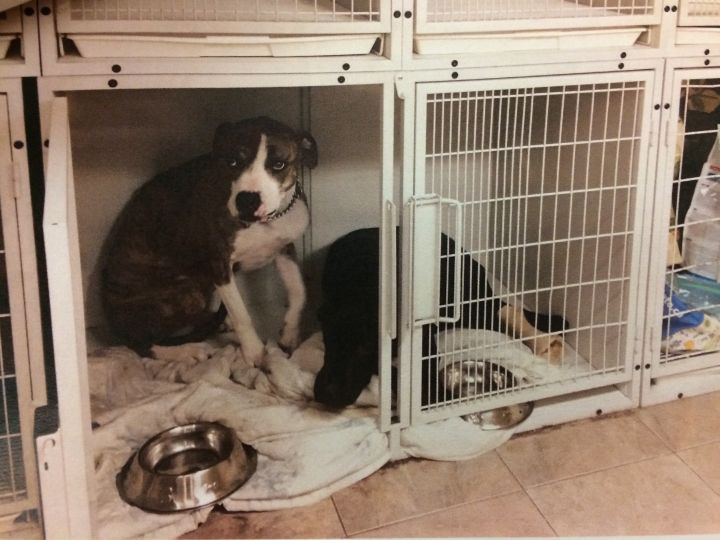*WARNING: Some readers may find the details in the below article disturbing.

A former veterinarian assistant testified in an Edmonton courtroom Wednesday that she saw her boss, Dr. Jun Yang, hit two dogs at his clinic.
Animal care and control officers seized the dogs from his Edmonton clinic in April 2016; one a black Labrador named Heza, the other a Staffordshire terrier named Tiggor.
The following June, Yang was charged with wilfully causing unnecessary pain, suffering or injury to an animal. Yang was also charged under the Animal Protection Act. He is accused of causing an animal to be in distress, failing to ensure an animal has adequate food and water, and failing to provide an animal with adequate shelter.
READ MORE: Edmonton vet charged with animal abuse
The Crown alleges the animal abuse happened between Aug. 1, 2015 and April 15, 2016.
Sasha Simons worked at the Hollick Kenyon Veterinary Clinic from October 2014 until she resigned on Feb. 10, 2016.
During Yang’s trial, she told the court she witnessed Yang grab one of the dogs in a choke hold and punch the animal with a closed fist; once in the ribs and another time on the head.
A separate time, she said the vet used a large bone to strike one of the dogs on its hip three times.
“It was bone on bone,” Simons said of the sound the bone made when it hit the dog.
Choking back tears at times, Simons told court she feared her former boss and never questioned him about the hitting. She did however ask to adopt one of the animals, but said Yang refused.
Simons testified she was instructed not to get attached to the dogs and was reprimanded if she tried to fill their water dishes. During her testimony, she said she questioned the veterinarian about his care of the animals and was told by Yang it was not her concern, nor did she understand how clinic animals differed from pets at home.
Simons said she was often told to put a muzzle on Heza and to keep it on the dog for her entire 5 p.m.-to-midnight shift.
Both Simons and Carol-Anne Gautreau, another former employee, said the dogs were forced to live in the same small crate.
“They were living in a metal kennel with metal bars,” Gautreau said.
The veterinarian technician testified that she thought both dogs had lost weight over the five months she had worked there.
“Triggor, I would describe as underweight and emaciated.”
According to Gautreau, Heza was also severely underweight.
“She had ribs showing. You could see the majority of bone in her body very clearly.”
Both of the former employees said they were concerned that the dogs weren’t getting enough food, water and exercise.
Yang’s lawyer, Brian Hurley, questioned Gautreau if she ever asked Yang when he exercised the dogs. She said no.
Hurley told the court Yang would often sleep at the 24-hour clinic.
He said Yang kept his dogs thin and negative assumptions were made about his care of the lab and Staffordshire terrier. He pointed out training and discipline techniques like condition response training and closed-fist training were never discussed with the staff.
The former employees said Yang was a strict boss and was concerned his staff were not following the rules.
“It didn’t seem fair,” Gautreau said when she was told not to show the dogs too much affection.
The trial is expected to last the rest of the week.








Comments